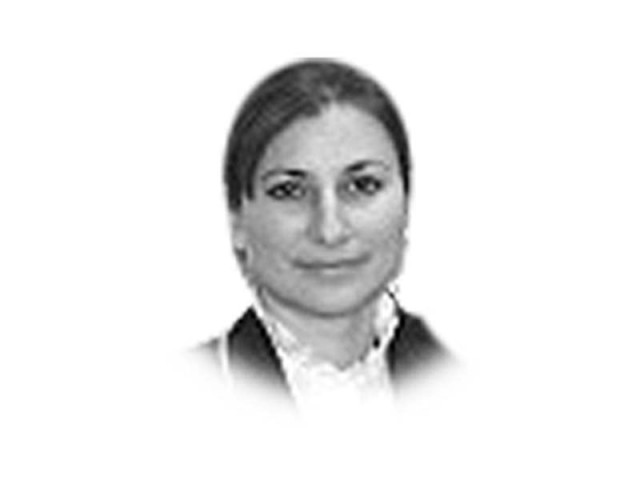
The writer is the Executive Director of the Centre for Dialogue and Action, FC College, Lahore, and an honorary Fellow at Lucy Cavendish College, University of Cambridge, where she did her PhD
As an educationist, I was one of four people invited from Pakistan to the American president’s Interfaith and Community Service Campus Challenge in September; in total, 500 other people were invited. This was an exciting time to be in Washington, DC as two more exemplary world leaders were also scheduled to visit the White House and meet with President Obama — the dynamic Chinese President Xi Jinping and the popular Pope Francis. Both leaders came with important but different messages which could determine the prospects of peace between civilisations.
Against this background, there was also, for me as a Muslim, the big challenge of trying to reconcile what was happening to the Muslim world — clandestine foreign interference, wars and violence forcing even the well-off to become homeless immigrants, the heartbreaking scenes on TV of mothers and fathers with little children being torn apart by inhuman laws. One European camera-woman was shockingly caught on video kicking a child from Syria as she entered the borders of Hungry with her father. On American television, presidential candidates such as Donald Trump (with a lot of money but little intellect) talked ignorantly about Islam as ‘the enemy’. Muslims were the subject of an unsavoury variety of Islamophobic attacks. The media — revelling in sensationalism — inflamed the problem. As a result, there were also reports of mosques and women in hijab being increasingly attacked and assaulted. I thought to myself that there were going to be a lot of challenges ahead of us and we would need to find answers within our own traditions; and as a global citizen, I thought that it is vital for us as a world civilisation to find solutions to the global conflicts of the present times.
The conference I was attending at the White House also reflected a desire to create a more peaceful world. After a long journey from Pakistan, I joined an impressive number of religious scholars from various faiths, leaders and university heads from around the world. The three-day event was mainly organised by an excellent team of government and university partners, including Melody Fox Ahmed (an American married to a Pakistani Muslim) who works as Assistant Director at the Berkley Center for Religion, Peace and World Affairs, at Georgetown University. The other key organisers and partners included President Obama’s team at the White House, the Department of Education, the International Shinto Foundation, and Howard University — the oldest African-American university. At Georgetown University in the historic Riggs library with Father Frazer from India and Professor Akinade from Georgetown University in Doha, Ken Bedell of the Department of Education asked me to start the panel discussion. I emphasised that the world is in flames, the problem is global, and we need to work hard to put out the flames through sustained, effortful and united work in inter- and intra-faith education by learning about our own rich history of coexistence.
Two other functions were held at the White House. The excitement for us participants was dulled by the high level of security. The long line of participants from different countries with their various national clothes looked like, as one observer pointed out, “a rainbow of diversity”. People were mingling together: some in Pakistani shalwar kameez, others in orange Buddhist and Hindu holy dresses, yet others in formal Western clothes. Each participant had to show their identity twice, move from iron doors to entrance points where each one of us were made to stand still, while from behind low shutters a few inches away was a fierce-looking Alsatian sniffer dog to clear us. In front of me, was a tall security guard with his gaze fixed. It was a tense moment. Cleared from here, the Americans got a green badge (like a green card) to wear — they could move freely. The rest of us from different countries got pink cards — we had to be escorted. Senior professors wondered at the differentiation, but the disgruntled participants were quickly charmed by the thoughtful hospitality of our hosts.
Some of the key ideas that were discussed during the three days were that ‘interfaith’ is a concept that enables people of each faith and community to begin to learn to respect ‘the other’ — the religious other, the ethnic other and the gendered other. We accept differences and see diversity as strength, and not as an adversity. We respectfully allow for various expressions of faith, see the ethnic other as a brother or sister, and understand that women are complete individuals in their own right with intellectual capabilities and full rights. Speakers at the conference mentioned how important not just interfaith is (i.e., dialogue between people of different faiths and cultures), but also intra-faith (dialogue with people amongst our own faith community who hold different perspectives).
Although we all outwardly agreed that interfaith dialogue is an ideal and a norm we should all hold on to, there were some ‘experts’ present, who displayed biases and prejudices. One panelist on a diverse interfaith panel argued that his persecuted minority community shoulders all the responsibility for dialogue and improving relations with the majority faith community — an opinion others disagreed with. There are many in all communities who work hard to build peace and also those who destroy it within seconds. In another incident, I heard that one male attendee seemed to be only focused on enforcing his version of female modesty among his co-religionists. Even those who agree to participate in dialogue conferences have much to learn about how to see and interact with the ‘other’.
After the conference, I was invited to teach two university classes at the American University in DC — one on women in Islam at Professor Akbar S Ahmed’s World of Islam class with the Pakistan ambassador’s wife, Begum Shaista Jilani, and another class, Professor Brams’, on Eid day on inter-cultural communication in which we showed the film, Journey into Europe. The film ends with a message from the Pope of reaching out to Muslims in an embrace, as Muslims do on Eid. Articulating one’s own perspective while embracing the other is a message of hope in these times of desperation. Despite the challenges that lie ahead, the lesson is of showing courage to understand, reach out and help the other in order to build the blocks of a more cohesive world.
Published in The Express Tribune, October 6th, 2015.
Like Opinion & Editorial on Facebook, follow @ETOpEd on Twitter to receive all updates on all our daily pieces.

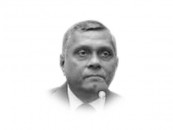


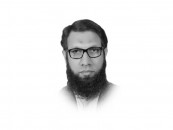






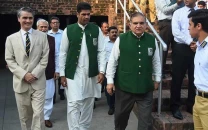
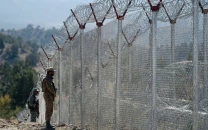


COMMENTS
Comments are moderated and generally will be posted if they are on-topic and not abusive.
For more information, please see our Comments FAQ